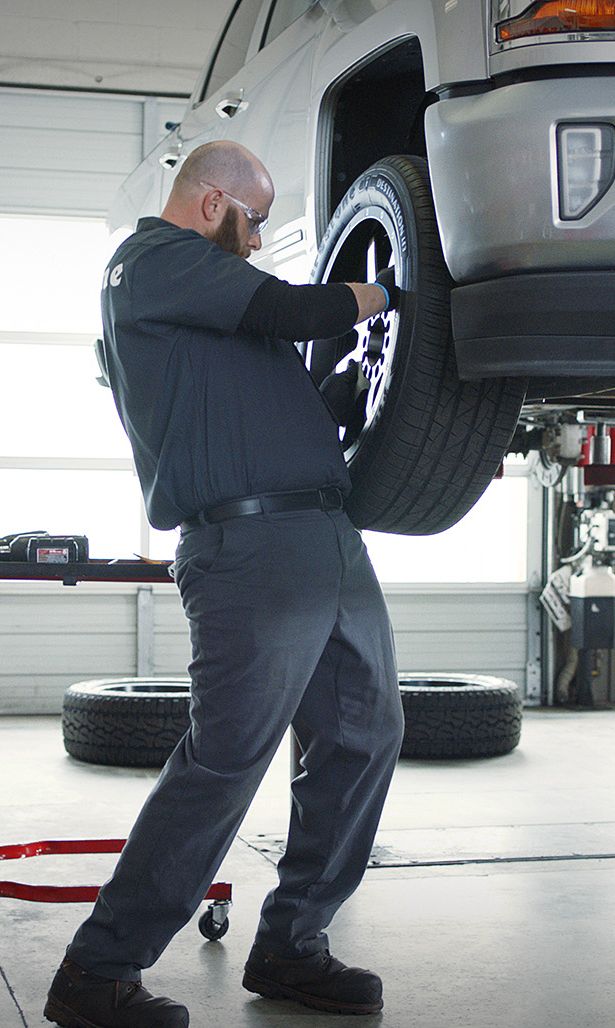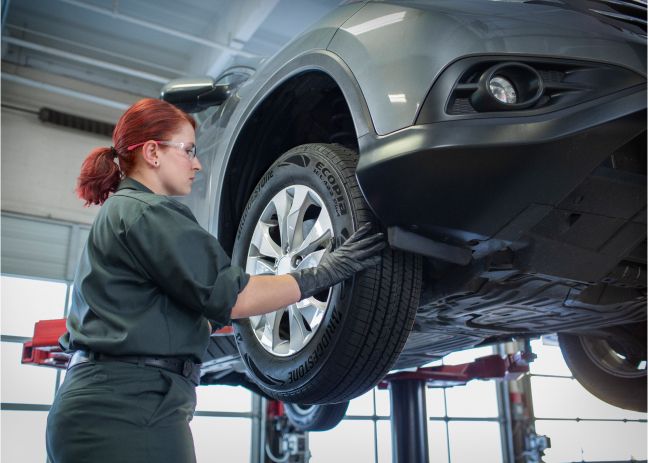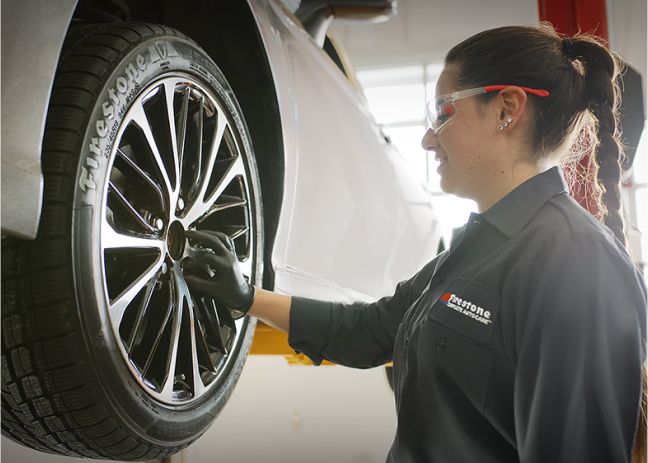TRUST THE EXPERTS WITH FLAT TIRE REPAIRS
Not all flat tires are created equal. Depending on how the flat tire happened in the first place, where the damage is located and how extensive it is, the best method for fixing a flat tire can vary. There are a few things to consider before deciding how to fix a flat tire—if it can be fixed at all.
It may be tempting to patch a flat tire yourself, but if it’s not done properly, it can be dangerous for you and your passengers, as well as other vehicles on the road with you. Instead, we recommend having a professional like the experts at Firestone Complete Auto Care take a look and recommend the best way forward.
If you have a flat tire, here’s what a tire professional will check when they’re considering whether repairs can be done.


HOW DID YOU GET A FLAT TIRE?
There are a few common ways to get a flat tire. Driving over a nail or other sharp object could result in a small puncture. Hitting a curb or a pothole, on the other hand, could cause damage that’s harder to pinpoint and fix. If your tires are relatively new and in good condition, and you were just unlucky enough to drive over a nail, a professional may recommend a simple combination patch plug. If the tires are old and weak, it might be better just to start shopping for a new tire or a new set.
WHERE IS THE DAMAGE LOCATED?
Damage or punctures to certain areas of a tire can severely compromise their stability and cannot be fixed. If a puncture is on or very close to the sidewall, it cannot be fixed safely. If the puncture or damage is located on the “crown” (middle) area of the tread, approximately 1 to 1.5 inches away from the shoulder, there is a good chance it can be repaired. If the tire has two separate punctures, it may be repairable if the two damaged areas are at least 16 inches apart.
HOW EXTENSIVE IS THE DAMAGE?
A tire puncture or hole bigger than ¼ of an inch cannot be repaired. Irregular cuts or gashes and large tread punctures also can’t be repaired because it could compromise the structure of the tire making it unsafe to drive on, especially at high speeds. A professional can evaluate whether the tire is repairable or not.
HAS THE TIRE BEEN DAMAGED BEFORE?
Repairing a damaged tire may be more budget-friendly than buying a replacement, but if the tire can’t be safely fixed, it’s always better to replace it. If the tire has been patched before, it may not be possible to patch it again. It all depends on the extent and the location of the new damage.
It’s always a good idea to talk to a professional about your plans before you commit. The tire experts at Firestone Complete Auto Care can help you understand the pros and cons of changing your tire size and help you choose a new set.

HOW WE FIX A FLAT TIRE
If the tire experts at Firestone Complete Auto Care determine that your flat tire can be safely repaired, they will most likely recommend a plug-and-patch combo. A tire plug fills the hole of the tire, and a patch is applied to the inside of the tire to prevent an air leak and help hold the plug in place. This allows a tire with ample useful life left in it to hold air reliably and help keep you on the road for longer. We can also check your alignment to help ensure your tires will continue to wear evenly and as expected.

ROAD HAZARD COVERAGE
Road Hazard Protection is an optional limited warranty* that covers tire repair or replacement if the tire becomes damaged and is rendered unusable due to a road hazard like a pothole, curb, or debris. Firestone Complete Auto Care will reimburse a prorated amount based on the wear of the tire and the current selling price for the replacement tire. Once the tire tread has worn down to 2/32nds of an inch, the coverage ends. The limited warranty applies to the original purchaser of the tires only and cannot be transferred.
*Conditions apply. See https://www.firestonecompleteautocare.com/maintain/service-warranty-options/ for details.